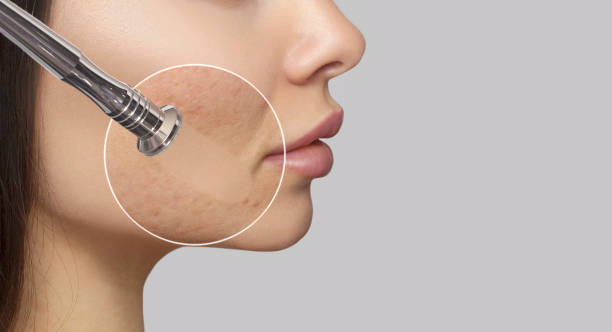Microdermabrasion, a non-invasive procedure widely acclaimed for its ability to rejuvenate the skin, specifically exfoliates the outermost layer of the skin, known as the stratum corneum of the epidermis. With a gentle abrading technique, microdermabrasion removes dead skin cells, prompting the emergence of a refreshed and smoother skin surface. This article embarks on a journey to provide a comprehensive understanding of the science behind microdermabrasion, the particulars of the targeted skin layer, and the transformative results it can yield.
The Anatomy of the Skin: Understanding the Basics

The skin is a sophisticated organ comprising multiple layers, each serving distinct purposes. These layers include the epidermis, dermis, and hypodermis, forming a protective barrier and playing pivotal roles in sensory perception, temperature regulation, and immune defense. To appreciate the effects of microdermabrasion, one must delve into the structure and function of these skin layers.
The Epidermis: The Outermost Shield
The epidermis is the surface layer of the skin that we visualize and touch. It is composed of keratinocytes, which form a formidable shield against environmental threats. The epidermis also houses melanocytes, responsible for pigment production, and Langerhans cells, which serve an immune function. This layer continuously regenerates, with older cells sloughing away to make room for newer cells from the depths below.
Microdermabrasion: The Non-Invasive Skin Refresher

Microdermabrasion is a sought-after skin treatment that gently polishes away the impurities and dead cells on the skin’s surface. Renowned for its versatility, it can be a stand-alone treatment or a complement to other skincare therapies. This procedure is often acclaimed for its efficacy in improving skin texture, reducing the appearance of fine lines, and promoting a vibrant complexion.
Which Layer Does Microdermabrasion Affect?
Microdermabrasion explicitly targets the stratum corneum, the uppermost portion of the epidermis. By meticulously exfoliating this layer, microdermabrasion can diminish the appearance of superficial blemishes, fine wrinkles, and minor discolorations, resulting in a more radiant and youthful skin appearance.
The Procedure of Microdermabrasion
The procedure is typically performed in a dermatologist’s office or specialized skincare clinic. A professional skincare therapist uses a device to spray fine crystals onto the skin or employs a diamond-tipped wand to exfoliate the skin cells. Following the exfoliation, a vacuum mechanism suctions away the dead cells and debris, leaving the skin cleaner and brighter.
After microdermabrasion, the skin may require specialized care to maintain the achieved results and foster optimal recovery. Implementing a gentle skincare routine, utilizing sun protection, and staying hydrated are crucial elements of the aftercare process that can enhance and prolong the benefits of the treatment.
The Ideal Candidate for Microdermabrasion
Microdermabrasion is appropriate for most skin types. Individuals desiring to improve their skin’s texture, tone, and overall appearance may benefit from this procedure. However, those with certain skin conditions or sensitivities should consult with a skincare professional to determine their suitability for microdermabrasion.
Conclusion
Conclusively, microdermabrasion is a well-established cosmetic procedure that exfoliates the stratum corneum, the superficial layer of the epidermis. Its ability to refresh and invigorate the skin makes it a popular choice for individuals aspiring to elevate their skincare regimen. Nonetheless, consultation with a dermatologist is advised to ensure it aligns with one’s specific skincare needs and goals.
FAQs: Your Microdermabrasion Questions Answered
- What is the recovery time for microdermabrasion?
Recovery time is minimal, with most people able to return to their daily activities immediately. The skin may appear slightly pink or feel dry for a day or so post-treatment.
- Can microdermabrasion help with acne scars?
Yes, microdermabrasion can help reduce the appearance of superficial acne scars by promoting skin cell turnover and collagen production.
- Is microdermabrasion painful?
Microdermabrasion is considered a painless procedure. Some may experience slight discomfort, akin to a mild scratching or vibrating sensation.
- How often should I get microdermabrasion treatments?
The frequency can vary based on individual skin types and desired outcomes, but many professionals recommend every 4-6 weeks to maintain results.
- Will one session of microdermabrasion be enough to see results?
While some improvements might be visible after a single session, multiple treatments are often needed for more significant changes in skin texture and clarity.
| Type | Description | Best For |
|---|---|---|
| Crystal | Uses a stream of fine crystals to exfoliate the skin. | Comprehensive exfoliation, suitable for a variety of skin types. |
| Diamond-Tip | Features a diamond-encrusted wand that gently abrades the skin cells. | Precise targeting of specific areas, such as delicate or harder to reach skin regions. |
